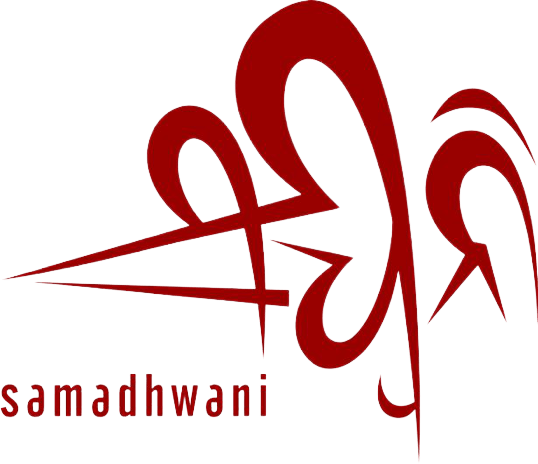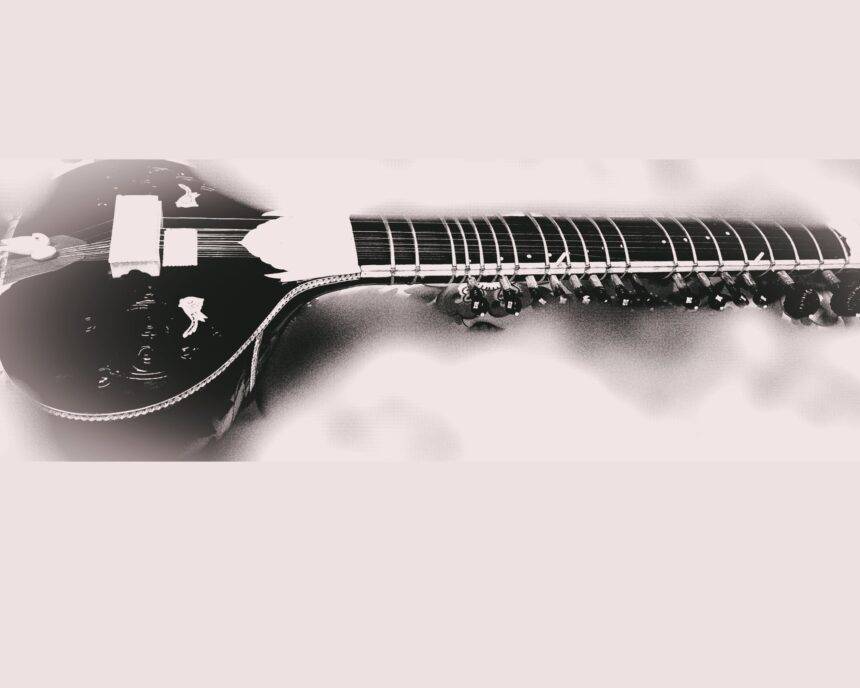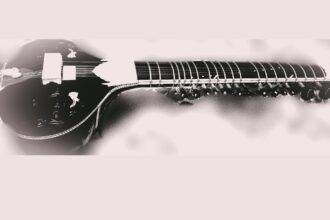Before the introduction of gayaki and the transformative contributions of Ustad Vilayat Khan to the sitar, vocal singing held a fundamental position in Indian music. I recall watching an interview with Ustad Shahid Pervez Khan several years ago, which I occasionally revisit on YouTube to cherish his insightful words on the significance of vocal music. Of particular interest was his reference to an ancient and captivating piece of poetry.
“Muhabbat keliye kuchh khash dil Makhsus hote hain
Ye woh nagma hai jo har saaj pe gaayaa nahi jata”
Here the sayar didn’t say “saaj pe bajaya jata hai”. That’s what instrumental music is. The saaj, or the instrument, does not play rather, it sings.
Summarizing a few words of his – according to the rich tradition of music, it emphasizes the cruciality of learning singing regardless of one’s primary instrument. Even for tabla players, understanding the sur (musical notes) is essential as it enables them to tune their instrument accurately. Therefore, the significance of learning vocal music cannot be overstated. The presentation of a specific raag varies when played on an instrument compared to when it is sung. This disparity in the outcome or essence of the raag can be addressed by delving into the realm of singing and vocal music. This concept, known as the “gayaki ang,” was elucidated by Ustad Vilayat Khan. Rather than simply imitating vocal music, Ustad Vilayat Khan emphasized that the human voice is the primary musical instrument gifted to us by Allah Ta’ala. The music that emanates from the voice, including its delivery and impact, should ideally be replicated and originate from the instrument (saaj) itself, ensuring a harmonious connection between the two. Ustadji went on to elaborate on the significance of singing the Sa Re Ga Ma Pa Dha Ni Sa in Indian music. In this musical tradition, no note exists independently of shrutis (microtones). It is the interrelationship and connection between the notes that gives rise to meaningful musical expressions. This continuity of notes, based on their inherent relationship, should also be maintained in instrumental music. Although the mediums may differ, the essence remains the same – it is all a form of singing. Some express themselves through the voice, while others do so through their chosen instrument. Ultimately, both modes of expression are intertwined in their pursuit of melodic beauty and artistic expression (https://youtu.be/hZFibqSdzso).
The evolution of Sitar playing techniques has been greatly influenced by vocal music throughout different periods. Whether it is dhrupad, khayal, thumri, tappa, kirtan, or folk music, vocal styles have played a significant role. Dhrupad is the foundational element that has shaped sitar playing since its inception and continue to do so today. The desire to replicate the in-depth intricacies of dhrupad singing has driven various structural changes in the instrument over time. This pursuit of capturing the essence of dhrupad has even led to the invention of instruments like the surbahar, which was discussed in previous chapters. The accompaniment of dhrupad by the pakhawaj, a traditional Indian drum, has also had a significant influence on the sitar. The rhythmic patterns produced by the pakhawaj have shaped the structure and techniques of the sitar’s right hand playing. The bol patterns (syllabic bols or mnemonic syllables) used in pakhawaj accompaniment have been incorporated into the sitar playing style, providing a rhythmic foundation and further enriching the instrument’s musical expression. Khayal singing, which emerged later in Indian music, has indeed influenced sitar playing techniques. The intricate melodic and rhythmic patterns, as well as the improvisational aspects of khayal singing, have left an imprint on the way sitarists approach their instrument. In addition to khayal, there have been influences from other music genres that have shaped sitar playing techniques. Ustad Inayat Khan, the father of Ustad Vilayat Khan, is known for his compositions that incorporated elements of kirtan. Kirtan is a vibrant and soulful music genre characterized by devotional singing and rhythmic accompaniment. The inclusion of kirtan elements in sitar compositions showcases the fusion and cross-pollination of different musical styles.
Furthermore, sitarists have drawn inspiration from other genres, such as tappa and thumri. Tappa is a fast-paced and intricate style of semi-classical singing known for its rhythmic complexities and challenging vocal techniques. Sitarists have incorporated elements of tappa into their playing, showcasing their virtuosity and skill on the instrument. Thumri, on the other hand, is a genre known for its expressive and romantic nature. Sitarists have explored the melodic and emotive aspects of thumri and adapted its nuances to their instrument, bringing forth a unique blend of classical and semi-classical styles. These influences from various vocal genres have contributed to the rich and diverse playing techniques of sitar, allowing sitarists to express a wide range of musical emotions and explore different musical styles within the framework of their instrument.
Hence, learning vocal music is highly beneficial for instrumental players, including sitarists. Vocal music provides a deep understanding of melody and raga (melodic framework). This understanding directly translates to instrumental playing, enabling instrumentalists to bring more depth, emotion, and authenticity to their performances. The vocal techniques such as gamak (ornamentation), meend (slides), and dynamics, imbue the instrumental playing with the subtle nuances and expressive qualities found in vocal music. Indeed, the different gharanas (schools) of sitar playing exhibit distinct approaches to raga presentation, but the foundation of sitar playing is deeply rooted in vocal music. Sitarists often translate the melodies and intricacies of vocal singing into their instrumental playing. They develop a mental or internalized singing approach while playing. They imagine the vocal rendition of a raga in their mind and then translate those melodic ideas onto the sitar. This enables them to maintain a connection to the expressive and melodic essence of vocal music as they navigate through the raga’s melodic structure.
By embodying the vocal traditions and principles within their instrumental playing, sitarists bring a unique quality to their performances, allowing them to express the depth and beauty of Indian classical music through the sitar.






